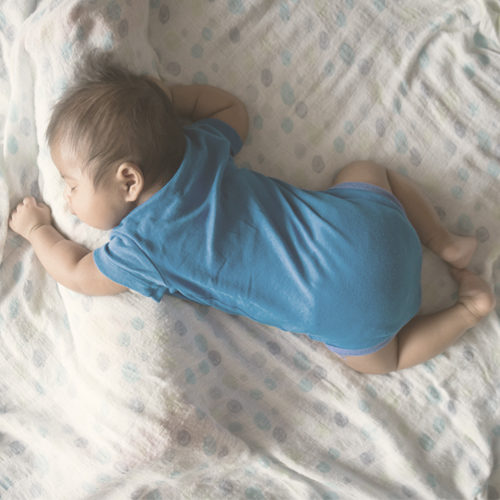Understanding SIDS

Sudden infant death syndrome (SIDS) is an unexplained death of a seemingly healthy baby less than 12 months old. It usually happens during sleep.
The mystery behind SIDS
SIDS is often referred to as ‘crib death’ because infants often die in their cribs. SIDS is a mysterious syndrome because the cause cannot be determined. However, some babies are more at risk of SIDS than others. It is more likely to affect a baby who is between 1 and 4 months old and is more common in boys than girls.
Possible causes of SIDS
The exact cause of SIDS is not known, but researchers believe that a combination of physical, sleep-environmental, and child-specific factors increases the vulnerability of babies to the condition.
Physical factors
Physical factors that may contribute to SIDS include:
- Respiratory infection
- Low birth weight
- Brain defects
Sleep environmental factors
The baby’s sleeping position, together with other factors, may lead to SIDS. They include:
- Sleep on the stomach or side
- Sleeping on a soft surface
- Co-sleeping
- Overheating
Some child-specific factors that may increase a baby’s risk of SIDS
These include:
- Being premature: Babies that are born prematurely and who have low birth weights have a higher chance of dying from SIDS
- Family history: Some families have a history of having their babies die from SIDS
- Race: Non-white infants are more likely to die from SIDS, and the reason is not yet known
- Age: Infants are more vulnerable between the first and fourth months of life
- Gender: Boys are more likely to die from SIDS than girls
Ways parents can endanger their babies
Mothers could also increase the risk of SIDS if any of the following maternal risk factors are present:
- She’s younger than 20
- She uses drugs and alcohol
- She has inadequate prenatal care
- She smokes
Furthermore, if the father smokes, the baby can inhale secondary smoke, which may be harmful.
Precaution you can take to prevent SIDS
Although there is no particular way to guard against SIDS. The following sleeping tips may help keep your baby safe:
- Breastfeed your baby: Breastfeeding your baby for at least 6 months tends to reduce the risk of SIDS
- Sleep in the same room with your baby: The best practice is to have your baby sleep in the same room with you but in their crib or bassinet, for at least up to 6 months
- Keep your baby warm but don’t overdo it: Do not cover your baby’s head. You may try a sleep sack or use other types of clothing that don’t require additional covers
- Immunize your baby: Some evidence indicates that immunization can help prevent SIDS
- Try a pacifier: Having your baby suck on a pacifier without a strap or string at bedtime might help reduce the risk of SIDS
- Avoid using baby monitors: The American Academy of Pediatrics has discouraged the use of baby monitors and commercial devices that claim to reduce the risk of SIDS since they are not effective and might even be unsafe
- Make the crib as bare as possible: You should avoid placing your baby on thick, fluffy padding, such as lambskin or a thick quilt. Use a firm mattress, and don’t put pillows, fluffy toys, or stuffed animals in the crib, as they can interfere with the baby’s breathing
- Put your baby on their back to sleep: Your baby should sleep on their back. Placing babies on the back reduces the risk of SIDS. Sleeping on the side or stomach has been known to increase the risk of SIDS



